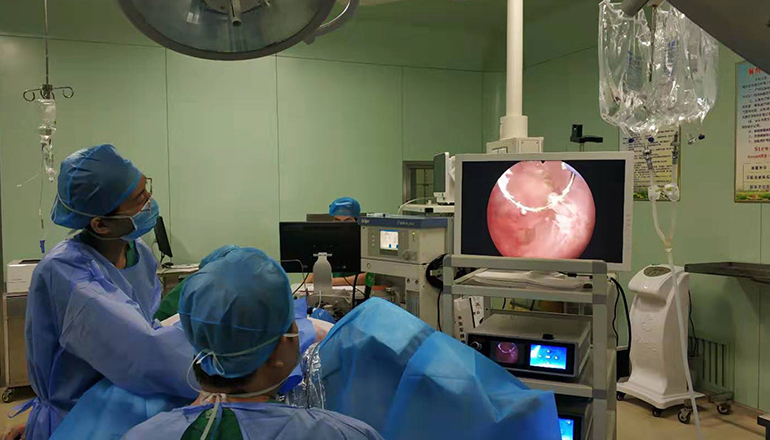- Shanghai, China
- [email protected]
- +86-21-58189111
Hysteroscopy surgery is a minimally invasive surgical technique that is used to diagnose and treat various conditions affecting the uterus. This procedure involves the use of a hysteroscope, a specialized endoscope that is inserted through the cervix and into the uterus to visualize the internal structure and perform surgical procedures.
Hysteroscopy can be performed for diagnostic purposes, such as to investigate the cause of abnormal uterine bleeding, pelvic pain, or infertility. During a diagnostic hysteroscopy, the surgeon will use the hysteroscope to examine the uterine cavity and identify any abnormalities, such as polyps, fibroids, or adhesions. In some cases, the surgeon may take tissue samples for further analysis.
Hysteroscopy can also be performed for therapeutic purposes, such as to remove uterine polyps or fibroids, or to correct structural abnormalities that may be causing infertility. In a therapeutic hysteroscopy, the surgeon will use specialized instruments that are inserted through the hysteroscope to remove or correct the identified abnormality.
One of the main advantages of hysteroscopy surgery is that it is minimally invasive, which means that it requires only a small incision in the cervix and does not require a larger abdominal incision. This results in less pain, scarring, and a faster recovery time compared to traditional open surgery.

Hysteroscopy surgery is typically performed as an outpatient procedure under general anesthesia or conscious sedation. Prior to the procedure, the patient may be required to undergo some preparation, such as taking medication to help dilate the cervix or undergoing a cervical ripening procedure.
During the procedure, the surgeon will insert the hysteroscope through the cervix and into the uterus. The hysteroscope contains a light source and a camera that provides a clear view of the uterine cavity. The surgeon will then use specialized instruments to remove any identified abnormalities or perform corrective procedures. The procedure typically takes between 30 minutes to an hour, depending on the complexity of the case.
After the procedure, the patient may experience some cramping and vaginal bleeding, which should resolve within a few days. The patient will also be advised to avoid sexual intercourse and strenuous physical activity for a few weeks to allow for proper healing.
Hysteroscopy surgery is a minimally invasive surgical technique that is used to diagnose and treat various conditions affecting the uterus. It offers several advantages over traditional open surgery, including less pain, scarring, and a faster recovery time. Hysteroscopy can be performed for both diagnostic and therapeutic purposes and is typically performed as an outpatient procedure under general anesthesia or conscious sedation.
Overall, hysteroscopy surgery is a safe and effective procedure with a high success rate for treating uterine abnormalities. However, as with any surgical procedure, there are some risks involved, such as bleeding, infection, and injury to surrounding organs. These risks can be minimized by choosing a qualified and experienced surgeon and following all post-operative instructions.
In conclusion, hysteroscopy surgery is an important tool in the diagnosis and treatment of uterine abnormalities. It is a minimally invasive procedure with many benefits, including less pain and scarring and a faster recovery time. If you are experiencing symptoms such as abnormal uterine bleeding, pelvic pain, or infertility, you should talk to your doctor to see if hysteroscopy surgery is right for you.
Leave a Comments